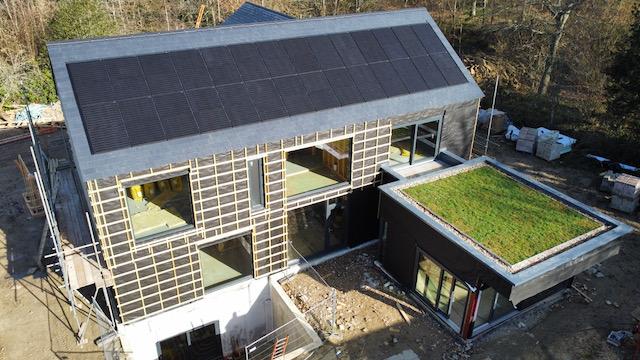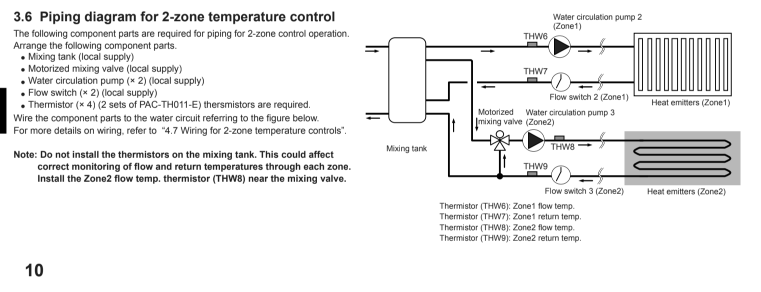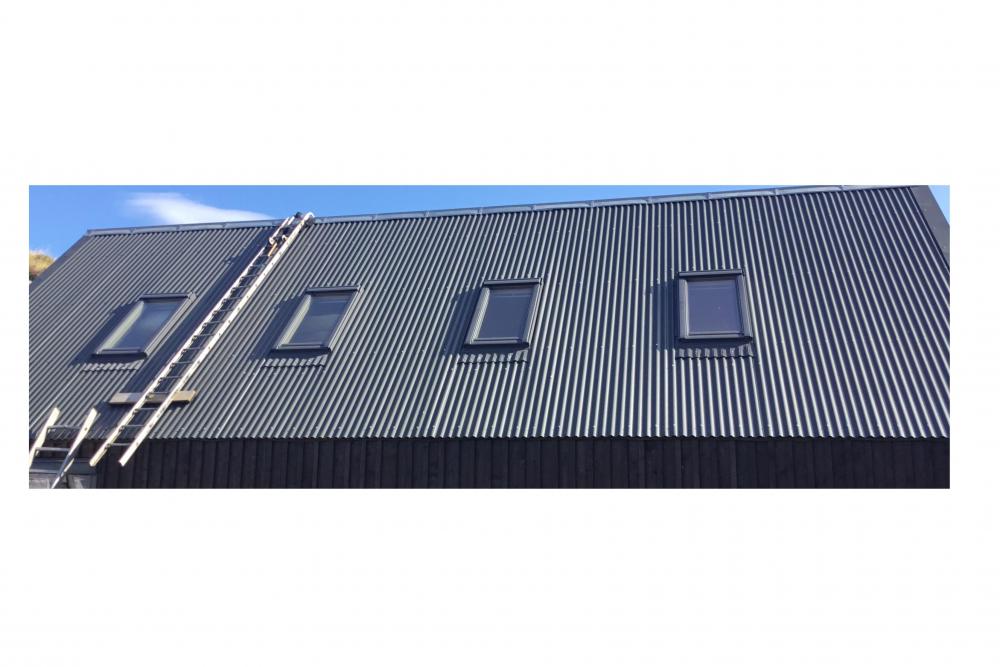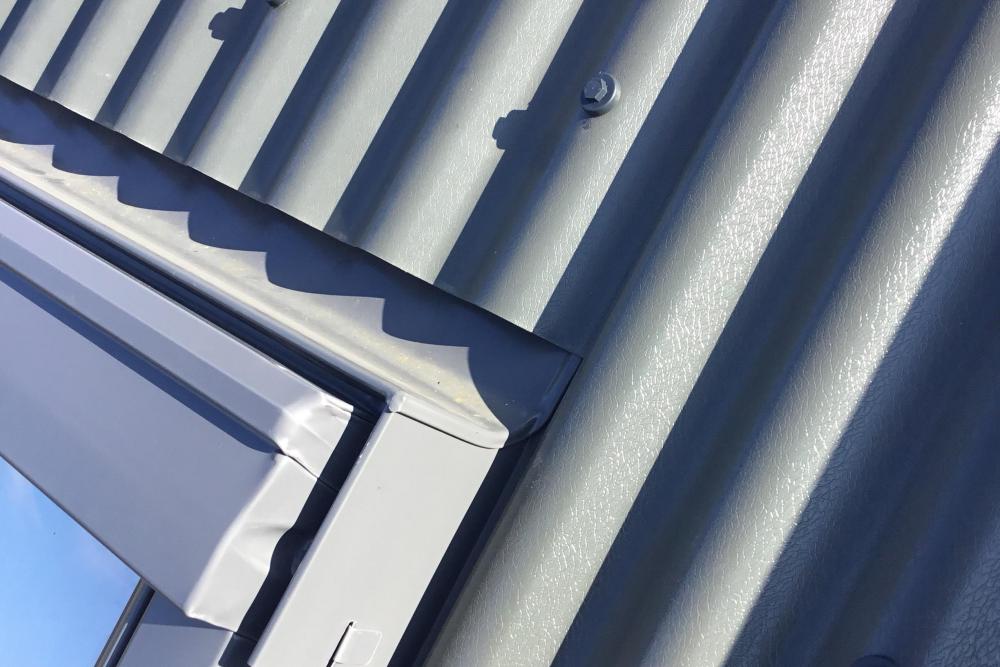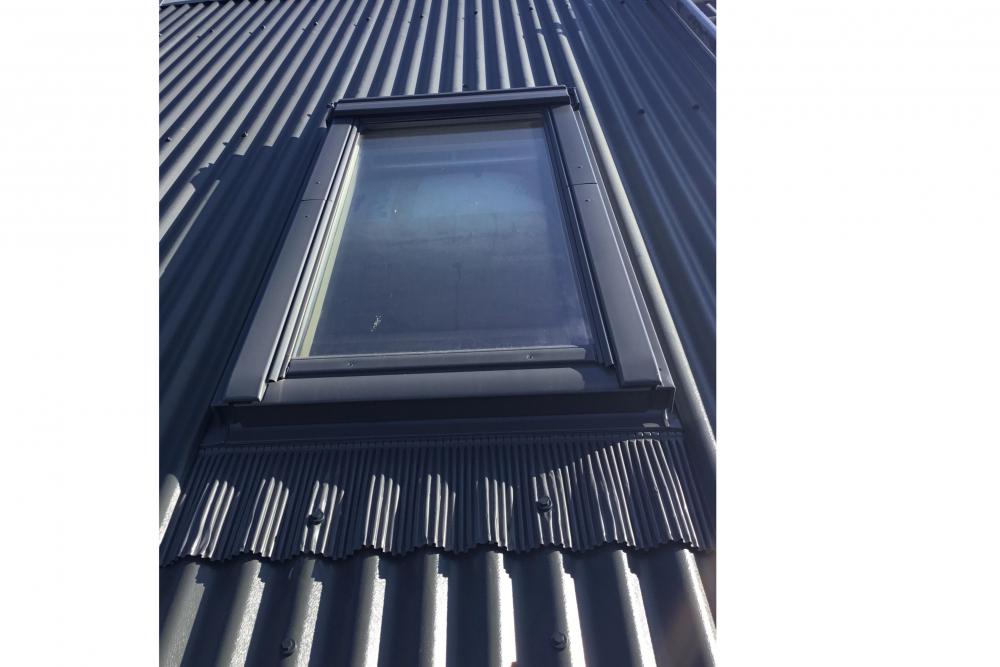Leaderboard
Popular Content
Showing content with the highest reputation on 02/16/22 in all areas
-
Sorry, just looked, they are 20a double pole switches fused at the board. (My lecky was good).3 points
-
From the video evidence, I think the following is happening the whole top layer at least is being lifted by the wind I think the wind is bouncing over the top of the flat surface and causing a low pressure area which sucks the whole membrane upwards (Bernoulli Effect) That shows the top layer (whatever it is) has not been bonded to the layer below - and (whatever it is) it should have been The question is (since normally it isn't this windy so the membrane lies down under its own weight) how much water ingress has there been below the top layer ? how much damage has there been to the layers below that layer? That means some investigative work, and possibly a temporary repair to make good the investigative work. Then you need to do some legwork to find at least three good roofers. You must do the normal Due Diligence on each company, and then choose one to do the job. The key issue is - what is the job? Getting someone to specify that job accurately - and then someone else to put it right is the only way to avoid the inevitable conflict of interest. There's a huge temptation to 'get someone in to sort it' sharpish. Doing that immediately puts you on the back foot: once committed, how do you control costs. Finding someone suitable to do the work is a job all on its own. BH is full of people telling us how hard it is to find tradesfolk. I'm going to have to wait six months for a decent sparky locally. And SWMBO is not happy. Thats the pressure. And it never stops.2 points
-
We move in tomorrow (going to be interesting with 2 sprained ankles) but hobbled about with the phone today for a walk through - it is unlikely to win any cinematography awards (just realised I was holding the phone upside down for one of them!) but there we go. I will try to sort some links soon.2 points
-
It seems that people can be misled by thinking that if a 3kW kettle is OK using a three-pin 13A plug then any 3kW load is similarly safe. The kettle, however, is only operating for seconds and any warming of the lead and plug goes unnoticed as the heat has insufficient time to build up. But even a lesser load like a 2kW convector will cause noticeable warming of its cable and plug and this is when drawing only around 8 Amps. This is why typical 3kW immersion heaters are connected back to their own 16A mcb in the consumer unit. I would be far more comfortable with 1500W running for twice the time - so long as it made up for losses and fit within any time-limited tariff.2 points
-
Every day is a school day (even fir old farts like me ?) https://spark.iop.org/energy-series-and-parallel-connections#gref2 points
-
Welcome @Crowbar hero, regarding ventilation MVHR will definitely cure your problem and also give the incoming air a temp boost, I have it and it’s very good. Yes UFH needs lower temperature water. I have a small ASHP that delivers 48’ water which is fine for DHW (with a larger tank to make up for blending down) and blended again to 30’ fir the UFH, the house is a constant 21’ and very comfortable. It’s a different heat to radiators as they are hotter and you feel the heat coming at you. I totally agree with @Marvin above, you only buy insulation once and can only really make the build airtight initially. My builder was great regarding these matters but most need careful watching to make sure your standards are maintained. I look forward to your progress and questions, this is a great forum with oodles of great knowledge.2 points
-
Sound waves are essentially variations in pressure and that's what a heat pump does, it varies the pressure to make the gas either abrorb or emit heat. So no surprise someone has built a heat pump that uses sound waves... https://www.connexionfrance.com/Practical/Science-and-Technology/New-French-invented-green-heat-pump-warms-homes-with-sound-waves Highlights... "A new system developed by Cédric François replaces the compressor with a small unit with a patented sound generator at its core, sending out a noise in the 100Hz to 150Hz range.." "...there are no moving parts, so the expected life of the core will go up from the present 10 years to 30, at least...."1 point
-
if the filter is out of air stream (min. pressure drop) and the air velocity within the chamber can be achieved (to meet the UV filter spec), there is no reason not. The question is why you want a UV filter in your MVHR? We, human being, should be exposed to some degree of germs/bacteria/virus in air and water to maintain our immune system. super clean air and water is going to do more harm than good in the long term unless you have other medical reason.1 point
-
I too have a Viessman 200 4 pipe system , One dedicated DHW, internal valve in boiler and seperate programmer and temp set to 55c Other 2 pipes serve UFH, towel rads on own 2 way diverter timed and 1st floor heating again own 2 way diverter and timed. Second circuit set at 48 and ufh blended down. I can have various flow temps at different times of day. Seems to work well but early days, only fitted in Nov so still tweeking and noting gas usage which the boiler also tells me for both heating and DHW1 point
-
I think a couple of galvanised chains could look a pretty cool feature as well as serving a practical purpose.1 point
-
I don't think you will get dormers in a consevation area either. If the new garage is taller than the existing, then you might also have a problem with that. Don't forget that the new garage will have to be built from substantially non combustable materials due to being up against the boundary.1 point
-
I have a similar one for calculating size of soakaway when you leave it to the end and cant get a digger in. Dig a big hole until knackered, leave it during pouring rain. If no water in bottom its big enough. Feel free to re use1 point
-
Mike, Not saying im right, but in the past on vertical hung slate, i've done a strip of mineral felt behind the bottom row. I figured that protected the bottom batten, and provided me with the kick out to provide a match up with the angle of the overlapped tiles above.1 point
-
I know exactly what you meant. We spent silly amounts to get Passivhaus Enerphit plus certified, but still rocking EPC D On the upside, 6 more weeks and RHI perverse incentives will be no more.1 point
-
Each element has a fixed resistance, say 19.2 ohms for a 3kw element on 240v using one on 240v gives a current of 12.5 amps (I = V/R) using two in series the resistance is added so we have 38.4 ohms So if used on 240v we have 240/38.4 = 6.25 amps and the power W = V X A gives 240 x 6.25 = 1500 or 1.5 kw.1 point
-
1 point
-
Its bamboo, can be glued or floated. Anyhow ordered the glue so no one tell me ime wrong!1 point
-
Thanks - these are useful figures to know. Yes but remember this is with, I think, 200mm PIR insulation underneath the floor.1 point
-
As it’s in a garage and intended as a utility I would probably go with Vinyl planks1 point
-
Galvafroid , not galvonoid, brilliant stuff, haven’t bought or needed any in years so not sure if you can still get it.1 point
-
We had four beams to reuse on the front of the garage We used a silver paint purchased from a local boat yard For painting the underside of boats Cheap as chips No rust five years on1 point
-
The installation company has contacted me again and stated they are acquiring the parts to repair the system and will return it to working order. I await a date for them to carry out the work and will let you know how it goes. Thank you for all the interest and advice. Cheers Dave1 point
-
We're not always as well organised as you Gary. Sometimes self-building reminds me of groping in the dark, and our VAT reclaims are so vital to the rest of the build that we decide to ask for help.1 point
-
No such thing.... It would have helped had I read your OP with more care. In effect, I was adding to @Omnibuswoman's response. Apologies1 point
-
Well my thought was, glued down Sticks it to the Substrate, floating doesn't and therefore introduces a bit of bounce. I already have a floating floor so it will never be solid like concrete, but floating on floating equals bounce squared. Well maybe not, but it would be bouncier than glueing.1 point
-
essentially what you are trying to achieve with the alutrix is to seal the inside of the house from the roof makeup which is why you want it lapping down the walls on the inside. I cant see how you can do this putting it outside as you cant lap it down all the inside walls. With regard to the rooflights, insulate the upstands and bring the alutrix up the inside of them and lap it over the lip the light will sit on. If you get any air movement into the insulation from inside the house you are going to end up ripping it all out as it will rot 100% as once the moisture is in the makeup it cant get out.1 point
-
Welcome @Crowbar hero As a basic, it's worth considering all the AIM APE elements at this stage, before making decisions. That is Airtightness, Insulation, Mechanical Ventilation with Heat Recovery, and Air Source Heat Pump, Photovoltaics and Electric Vehicle. You may not consider all of these, but when talking about saving energy on heating the first three make good long term choices However some of these will not work properly without the others: A MVHR will not work properly without Airtightness. An Air Source Heat Pump will have to compensate for the lack of Airtightness and Insulation to the degree that the benefits become questionable, especially during winter, without them. An ASHP uses electricity and Photovoltaics can supply a little during winter and a lot during summer when cooling can be a problem and an ASHP can supply cooling. PV can supply a little to an Electric Vehicle during winter and plenty during summer if your vehicle is at home during sunny days. So if finances cause you to have to consider only a few in my humble opinion AIM first and go APE later. Good luck with your project and remember the only daft question is the one you didn't ask and don't expect a good answer to your question unless you supply enough information. Marvin1 point
-
Get all your mates around and grease their palms. 4 good strong blokes should be able to lift that. You want it to arrive un damaged.1 point
-
1 point
-
Hi and welcome There is a heat loss spreadsheet made by @Jeremy Harris on here that many including me have used to model our heating needs and it proved very accurate. This is something you can do yourself. As to actual performance, that is largely down to detailing, it is possible to fit insulation so badly it might as well not be there if you don't care or don't know what you are doing. Where are you building and what construction method?1 point
-
Personally I think any grant should be for insulation so whatever fuel you use to heat it will use less ?♂️ As an aside, my builder, who had a stroke just after finishing my build, has just been told he can upgrade his old storage radiators, have cavity insulation and additional loft insulation for free, grant based on his benefits as a stroke patient ?1 point
-
Lesson for other self builders, at step 3, immediately accept the quote, pay the £3K and order the supply so it is the first thing on site even before you start building.1 point
-
If if it was so, you would be overproducing hot water. I am sure every real engineer involved in the hydrogen economy knows the truth, a resistance heater is easier and probably, including infrastructure costs, cheaper. Not as if there is no infrastructure costs needed to produce hydrogen. The fixation with hydrogen shows a lack of basic physics and chemistry. If we take todays electrical infrastructure, it can reliably supply 60 GW. We very really use that much. The UK is currently using ~43 GW, so we could store that extra 17 GW in pumped storage, compressed air, thermal and chemical devices. Come tonight, we will probably be using ~25 GW. So plenty of spare.1 point
-
I didn’t, nobody asked me to tell them ?♂️ as said above the DNO,s don’t know their ass from their elbow regarding ASHP,s, electric showers etc can put more load but not notifiable. I also agree that fabric first (loads of insulation) will almost negate a boiler of any real size, my build is not Passive (quite) but I only have a 5kW ASHP and that works just fine.1 point
-
Do what you can at the build stage to reduce heating need, so lots of insulation, good air tightness, good windows, low temperature under floor heating, Unvented hot water tank (not thermal store) Then the heat source is less important, a small system boiler will do it for now, as will an ASHP. You could also swap for an ASHP later, I am not awre of a need to seek DNO approval for a retro fit. But if you have a low energy house design that only needs a small inverter driven ASHP then I really cannot see why the DNO would say no. If you want a boiler for short term I would probably go oil with a small tank, and avoid the cost of a gas connection. Choose an outdoor oil boiler and it's a relatively easy swap to an ASHP.1 point
-
Nearly all gas boilers can run on a mix of hydrogen and gas as well. My guess is that _if_ hydrogen is used at all it will be just a few percent perhaps increasing over many decades like we have done with E10 biofuel.1 point
-
Just miss out one tile dead centre at the back perhaps? Or...I could 3D print you up a mould that you could cast a plaque with the date in or something...as a feature and have it at the front...1 point
-
Yes, our Jeremy did the same thing, dumped his complicated weather compensating system fir a single room stat, and I run ours on one.1 point
-
If you don’t want the expense of an ASHP (but I think it’s a good idea) some here in passive houses use a Willis heater to give a small amount of heat into the slab via the UFH pipes you installed. It will give you an idea of what heat is required to get the house comfortable then you could consider an ASHP in the future if required. (I installed my own ?).1 point
-
Can you explain this, will it be much more expensive to install through a registered RHI company than DIY it? If non RHI could a normally competent plumber (or even a minimally competent non-plumber-me) manage it?1 point
-
We use the MVHR to distribute heat from the bathrooms, which are at around 24C, around the house as well as leaving doors open. Using the MVHR only works because it's a very small amount of heat required.1 point
-
We visited a Passive house before starting on our self build and on the day we went it was 19 degrees inside but felt cool so we decided to put ufh in our Passive house so we had a heat source1 point
-
Yes, you send cold water around the UFH pipes. Cold enough to cool the slab but not too cold so as to cause condensation to form. The cold water comes from ASHP running in reverse, which most support.1 point
-
@dnoble I'm watching this with interest as we haven't installed any heating in our passive house. We're moving in soon and will play suck it and see with a panel heater or two. Have you tried running a plug in heater continually in a central area for a few days to boost the temperature of the contents and structure to something more comfortable. Turning it on intermittently will only heat the air in the room, but it will return quickly to that of everything else around it once switched off. It takes a lot longer for walls ,furniture etc to heat up than air. Did you do PHPP and if so what was your heating load?1 point
-
You can’t - Sunamp is providing potable water not heating and there is no way to make it do both. Depends on the Sunamp but if it’s and electric only then there is no way to heat them with a water circuit and an ASHP doesn’t get hot enough to phase change the PCM (needs 59°C) Yes - and they aren’t expensive. Do you have space for a buffer tank also where the UFH manifold is ..? I would get a 3-5kW ASHP and connect it via a buffer and run off peak. Assuming you have PV diversion then also get a buffer that can take an immersion and connect this as second dump load to the PV. Also gives you redundancy in the event of failure of the ASHP.1 point
-
https://www.jtmplumbing.co.uk/central-heating-controls-valves-c436/esbe-valves-controls-solid-fuel-products-c509/mixing-valve-c511/esbe-valves-actuators-3-point-p19117/s20737?utm_source=google&utm_medium=cpc&utm_term=esbe-valves-esbe-ara652-3-point-spdt-230v-6nm-60s-actuator-esbe-valves-esbe-valves-esbe-ara652-3-point-spdt-230vac-6nm-60s-actuator-12101700&utm_campaign=product%2Blisting%2Bads&cid=GBP&gclid=EAIaIQobChMIha-U0qrw6wIVgc_tCh0Q0gfiEAQYASABEgJx4fD_BwE Liking the above setup too. Going to ask their tech support a few questions to get a proper heads up.1 point
-
Right, the ASHP we're using (Ecodan 8.5kw) controller has an output to manage an electrically actuated mixing valve, see snippet from the MIs copied below. It has thermistors on the flow and return to the UFH so in priciple can be as good as a thermastic analog valve, failure modes excepted. This is quite a nice setup, as it means the ASHP can do the right thing to actively manage cooling as well as heating temperature for two emitters running simultaneously at different target temps, and also in principle could close off (set to bypass) the mixer valve when the zone is not being actively driven, which would allow the zone pump to overrun too (i.e. support 24/7 UFH recirculation as discussed above). Now assuming we don't trust this setup to protect our expensive floor finishes, yet would still like to have that motorized mixer valve for the fine control it gives, would it make sense to use both a blending TMV pumpset and the motorized valve? We'd put the TMV on the UFH side of the motorized valve (i.e. integrated with the pump). For this exception situation only use-case, using a standard (less expensive) TMV from wunda that only goes down to 30ºC maybe ~OK as this would only close off in error case anyway? (Still can't help it feels OTT. The alternative safety measure that comes to mind is to put an additional thermistor in the floor screed or on the UFH flow pipe, and have it trip a relay to cut out the pump if it ever exceeds a set point). Bonus question: recommend me an appropriate motorized valve? ? (2L+N connections) Cheers1 point
-
No. It’s a safety thing full stop. Forget modulation, it’s to prevent the max heat delivery ever getting into the slab. Not any old TRV, as these have capillary wires coming off them which go to a reference sensor probe ( look at the pics for the curly silver wire ) so must be made fit for purpose. Regular TRV’s reference room temp to actuate, these take reference from the probe. No. The manifold pump is there for circulation of the water through the loops. The ASHP pump is there to circulate heat back and forth the manifold > ASHP only and should never be relied upon for UFH flow. Yup. Not quite 100% but the majority of it. No. The flow to the manifold from the ASHP will be arrested by a 2-port zone valve fitted before the manifold in the flow pipe. With that shut you can run the manifold pump to do as per Jeremy did and Bobs your uncle and Fannys your aunt. ? Water will always follow the path of least resistance, so the pump will just happily recirculate through the pump / blending set arrangement. The answer is, you need a manifold pump and blending set ( TMV ) full stop. Convincing yourself that the risk is minimal is academic as you can still get that small HP over 50oC, regardless of how long it takes to get there. Scenario could be that just one loop is open and flowing vs the load of the entire heated area, so compound failures are what drives these initiatives, guidelines and regulations. Now shoot off and buy your TMV ?!!1 point
-
Every UFH manifold needs a pump and a TMV. TMV’s cannot be pumped through, they have to be ‘sucked’ on, ergo a pump needs to be downstream of a TMV in a heating setup. TMV caps the max temp the floor will ever see, I’m sure there’s a reg there but moot unless you intend to not fit one. You should not ( cannot ) rely on an external Ctrlr to guarantee that the slab / screws won’t see the max temp of the heat source, so if said Ctrlr failed, on an ASHP, you could get up to 55-60oC floor temp which will cook anything that’s not high-temp tolerant, plus it would be a health hazard ( if a toddler or elderly were to end up on it ) or if anyone walked onto it barefooted etc hence the reg. UFH manifolds need the local pump to circulate water through the loops, and the ASHP circulation pump send the water to / from the manifold. Think of it like a figure 8, with the two circuits being connected but hydraulically separate eg both pumps can circulate at different flow rates without conflicting with one another. The IVAR blending set also has an inbuilt bypass ( so the ASHP pump never sees a closed circuit ).1 point
-
I spent a long time looking at velux installations in corrugated tin and NOT ONE was done well....... I looked at why they were done badly and then sat down and worked out how to do it well. I did the layout and install myself as the devil is in the detail if you want it all to line up and work properly. The most important aspect for me was the position of the windows and there size in relation to the corrugations in the tin sheets. You need to make sure that one sheets edge will end with with a non cut downward sloping corrugations that falls directly into the inner gutter of the velux..... you then need to know that the windows width is also correct so that the far side gutter lines up with the next sheet of tin enabling that tin edge to fall in the opposite velux gutter...... then if you have multiple windows (I had 4 in my roof) you need to make sure that they all correspond with the corrugations. There really is very little to play with on the set out as the tin does not allow for error, you get about 10-20mm of space in the flashing gutter to play with but you really want the tin edge to fall in the middle as if it’s to close to the window it could block up with leaves or moss, to far and it’s not going to be as effective, also ANY error will be carried over to the next window as the corrugation spacing is set. It’s possible with very carful layout but if this is done wrong your going to have another example of how not to do it....... if you find a contractor that says they can do it INSIST to be able to go and look at one of there installs..... I visited 3 different installations done by 3 different professional roofers and I would not have payed for the work......1 point
This leaderboard is set to London/GMT+01:00









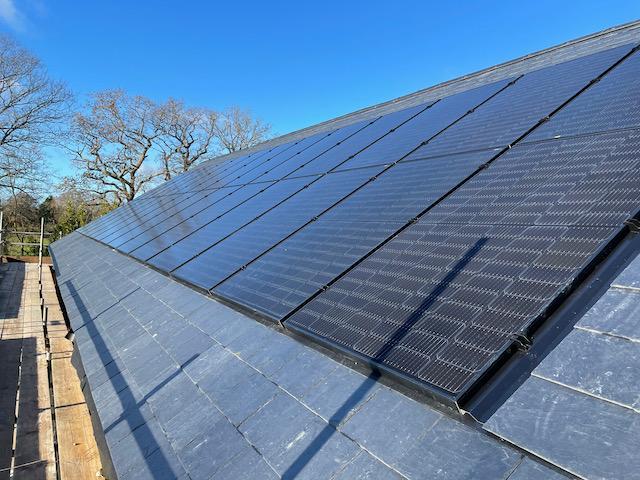
.jpeg.eb4771dfabb40bda05ca6ff7080bd013.jpeg)
